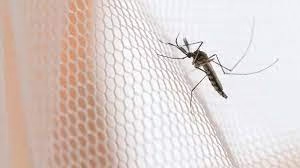In a major breakthrough against malaria, biomedical scientists have developed a new method to dose mosquito net material with powerful drugs that kill the Plasmodium parasite — the organism responsible for malaria — before infected mosquitoes can transmit it to humans.
This innovation could sidestep the growing global issue of insecticide resistance, which has compromised the effectiveness of many traditional mosquito control methods.
“Insecticide resistance is now extremely common in malaria-transmitting mosquitoes, putting many of our control tools at risk,” says Dr. Alexandra Probst, lead author of a new study published in Nature. “By targeting the parasite within the mosquito, rather than killing the mosquito itself, we offer a new path forward in reducing malaria transmission.”
Malaria remains a deadly disease, killing over 500,000 people each year. It’s caused by Plasmodium, a single-celled parasite spread by bites from infected Anopheles mosquitoes. While anti-malarial drugs have been in use since the 1700s — when British soldiers in India mixed quinine with gin to make it more palatable — both the parasite and its mosquito hosts have continued to evolve resistance.
After peaking at nearly 900,000 deaths in 2000, global efforts brought numbers down to 558,000 in 2019. However, progress has since stalled, with deaths rising again to 627,000 in 2021 and over 263 million new cases recorded in 2023. Papua New Guinea and the Solomon Islands alone account for 90% of the Western Pacific’s malaria burden.
Now, researchers from Oregon Health & Science University (OHSU) have taken a bold step by turning conventional insecticide-treated nets into parasite-killing tools.
“The best malaria defense has been insecticide-treated bed nets. But with resistance rising, we’ve shifted focus to eliminating the parasite directly,” explains Dr. Mike Rubal, biomedical researcher at the Southwest Research Institute in Texas.
At the heart of this innovation are compounds called ELQs (endochin-like quinolones), a class of experimental antimalarials developed by Professor Michael Riscoe at OHSU. These were tested for parasite-killing ability by Professor Flaminia Catteruccia and her team at Harvard’s T.H. Chan School of Public Health.
Of 81 compounds tested, two ELQs emerged as the most effective. When incorporated into mosquito net material, these drugs killed Plasmodium inside the mosquitoes — even those resistant to insecticides.
“If an infected mosquito lands on ELQ-treated netting, it essentially gets disinfected,” says Rubal. “The drug is absorbed through its legs and kills the parasites it’s carrying.”
This innovative strategy not only neutralizes the infection in the mosquito but also helps to interrupt the transmission cycle, offering a promising new tool in the global fight against malaria.



